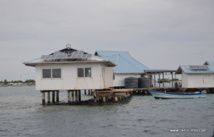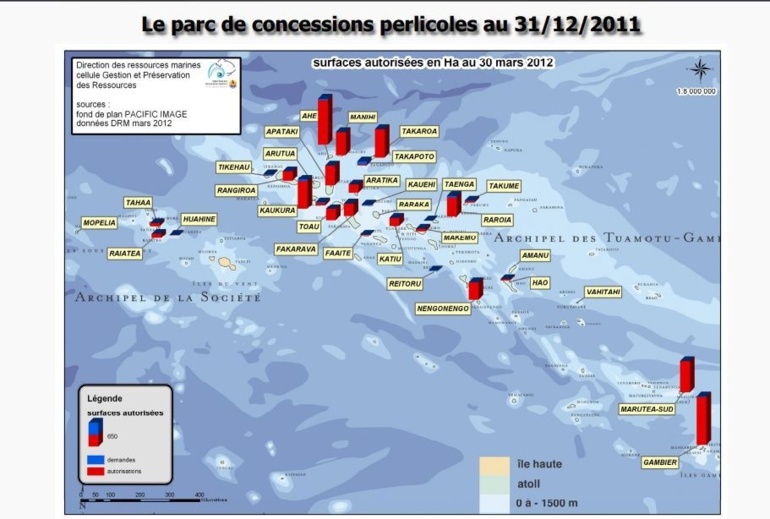Caitlin
Well-known member
- Joined
- Dec 11, 2004
- Messages
- 8,502
http://www.tahiti-infos.com/Un-moratoire-sur-les-concessions-maritimes-perlicoles_a76426.html
A friend just sent this to me. Below is the translation. Above is the original link.
Maybe it is saying Tahiti is trying to control/maintain quailty but limiting competition? , but I have no idea what the impact of this will be, and I am curious. Josh or anyone?
[h=1]A moratorium on pearl maritime concessions [/h]
 A pearl farm on Manihi (Tuamotu).
A pearl farm on Manihi (Tuamotu).
Papeete, Wednesday, June 12, 2013. There are currently more than 500 French Polynesia concessions area maritime public pearl farms, the vast majority is in the Tuamotu, Manihi and Ahe is the focal heart of Polynesian pearl culture. Thus, the lagoon Ahe alone had 80 concessions pearl in May 2012. But obviously, in spite of a very specific fill to be granted a concession for maritime pearl, an extension of this concession, even renewal (every 5 years), specifications too large a share of unknown casts doubt on the reality of the local pearl production. To see more clearly, the Ministry of Marine Resources will soon launch a moratorium on permits for temporary occupation of the maritime issued for purposes pearl. An announcement after the Cabinet on Wednesday by spokesman Marcel Tuihani government. " You have to control what has already been given to the different areas and verify what is actually used. All temporary occupation of the maritime domain for pearl valid to date will be controlled . " In this comprehensive survey of the production chain bead French Polynesia can be released eventually, a real development strategy that sector. At the end of 2011, 9,720 hectares of lagoon were exploited for the pearl, the quota of 10,000 hectares currently underway for all of Polynesia, according to figures from the Department of the pearl of the Human Resources Marines. Gross Tahitian pearl is the engine of exports of the country, although the volume and especially the value of these exports weakened over the years. Some explain in part the crisis knows the Tahitian pearl in recent years by a decline in quality and too many producers. Stay tuned.

Written by Mireille Loubet Wednesday, June 12, 2013 at 17:12 | Read 1052 times
A friend just sent this to me. Below is the translation. Above is the original link.
Maybe it is saying Tahiti is trying to control/maintain quailty but limiting competition? , but I have no idea what the impact of this will be, and I am curious. Josh or anyone?
[h=1]A moratorium on pearl maritime concessions [/h]

Papeete, Wednesday, June 12, 2013. There are currently more than 500 French Polynesia concessions area maritime public pearl farms, the vast majority is in the Tuamotu, Manihi and Ahe is the focal heart of Polynesian pearl culture. Thus, the lagoon Ahe alone had 80 concessions pearl in May 2012. But obviously, in spite of a very specific fill to be granted a concession for maritime pearl, an extension of this concession, even renewal (every 5 years), specifications too large a share of unknown casts doubt on the reality of the local pearl production. To see more clearly, the Ministry of Marine Resources will soon launch a moratorium on permits for temporary occupation of the maritime issued for purposes pearl. An announcement after the Cabinet on Wednesday by spokesman Marcel Tuihani government. " You have to control what has already been given to the different areas and verify what is actually used. All temporary occupation of the maritime domain for pearl valid to date will be controlled . " In this comprehensive survey of the production chain bead French Polynesia can be released eventually, a real development strategy that sector. At the end of 2011, 9,720 hectares of lagoon were exploited for the pearl, the quota of 10,000 hectares currently underway for all of Polynesia, according to figures from the Department of the pearl of the Human Resources Marines. Gross Tahitian pearl is the engine of exports of the country, although the volume and especially the value of these exports weakened over the years. Some explain in part the crisis knows the Tahitian pearl in recent years by a decline in quality and too many producers. Stay tuned.

Written by Mireille Loubet Wednesday, June 12, 2013 at 17:12 | Read 1052 times
